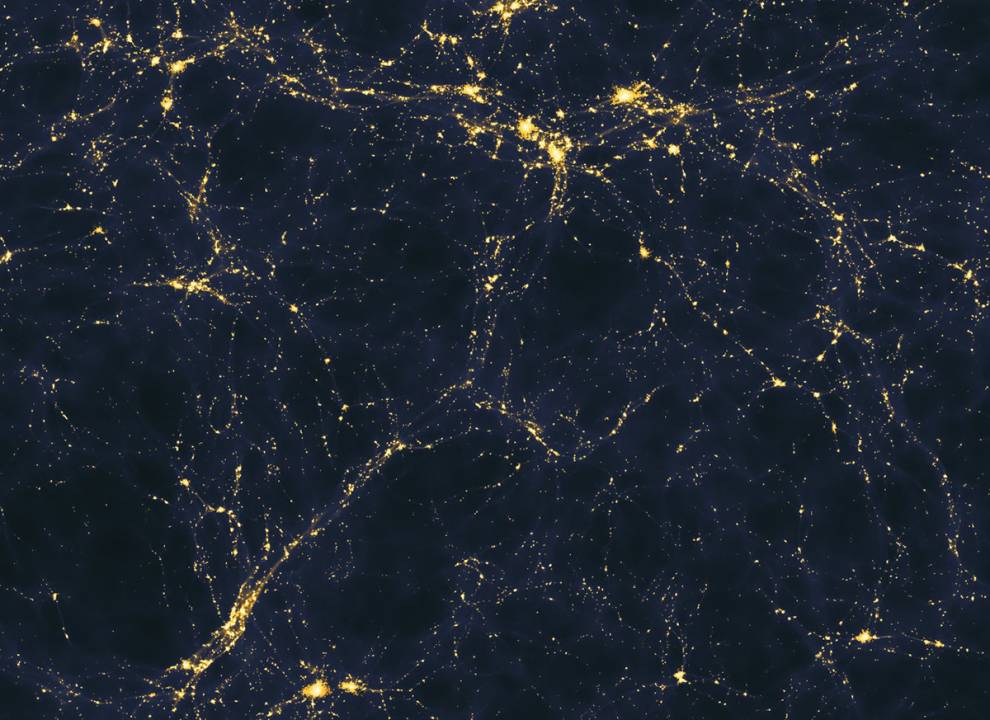Student: Lillian Guo
First supervisors: Hiranya Peiris (Astro), Andrew Pontzen (Astro)
Second supervisor: Chamkaur Ghag (HEP)
Entry year: October 2020

Large scale structure of the Universe, formed in a simulation from gravitational instability acting on tiny initial density fluctuations. Credit: Andrew Pontzen and Fabio Governato
The past decade has seen tremendous progress in cosmology, underpinned by an array of precision observational probes, painting a picture of a Universe consisting of roughly 4 per cent ordinary matter, 26 per cent "dark matter" and 70 per cent even more mysterious "dark energy". In this picture, galaxies form and evolve within dark matter halos, which themselves grow via gravitational instability from small density fluctuations present in the early Universe. However, important questions remain about the way dark matter halos emerge from these simple initial seeds of cosmic structure. A theoretical understanding of this process is an essential step towards unravelling the intricate connection between halo and galaxy formation. Recent work has shown that modern machine learning techniques may have the capacity to provide new insights into the process of dark matter halo formation, in some cases contradicting long-established human intuition. This project will develop powerful techniques based on deep-learning algorithms to shed light on the dark matter halo-galaxy connection.
Funding source: Graduate Research Scholarship and Overseas Research Scholarship
 Close
Close

